-
抗体試薬
- フローサイトメトリー用試薬
-
ウェスタンブロッティング抗体試薬
- イムノアッセイ試薬
-
シングルセル試薬
- BD® AbSeq Assay
- BD Rhapsody™ Accessory Kits
- BD® OMICS-One Immune Profiler Protein Panel
- BD® Single-Cell Multiplexing Kit
- BD Rhapsody™ TCR/BCR Next Multiomic Assays
- BD Rhapsody™ Targeted mRNA Kits
- BD Rhapsody™ Whole Transcriptome Analysis (WTA) Amplification Kit
- BD® OMICS-Guard Sample Preservation Buffer
- BD Rhapsody™ ATAC-Seq Assays
- BD® OMICS-One Protein Panels
-
細胞機能評価のための試薬
-
顕微鏡・イメージング用試薬
-
細胞調製・分離試薬
-
- BD® AbSeq Assay
- BD Rhapsody™ Accessory Kits
- BD® OMICS-One Immune Profiler Protein Panel
- BD® Single-Cell Multiplexing Kit
- BD Rhapsody™ TCR/BCR Next Multiomic Assays
- BD Rhapsody™ Targeted mRNA Kits
- BD Rhapsody™ Whole Transcriptome Analysis (WTA) Amplification Kit
- BD® OMICS-Guard Sample Preservation Buffer
- BD Rhapsody™ ATAC-Seq Assays
- BD® OMICS-One Protein Panels
- Japan (Japanese)
-
Change country/language
Old Browser
Looks like you're visiting us from United States.
Would you like to stay on the current country site or be switched to your country?
BD Pharmingen™ PE Mouse Anti-Mouse IL-27 p28 (IL-30)
クローン MM27.7B1 (also known as MM27-7B1) (RUO)

Flow cytometric analysis of IL-27 p28 (IL-30) expression by activated RAW264.7 cells. Mouse RAW264.7 cells were cultured with IFN-γ (Cat. No. 554587; 24 h; Left Plot) followed by lipopolysaccharide (LPS, Sigma L3137, 1 µg/ml; additional 24 h). BD GolgiStop™ (Cat. No. 554724) was added for the final 5 h of culture. RAW264.7 cells were cultured with tissue culture medium alone as a control (Right Plot). BD Horizon™ Fixable Viability Stain 510 (FVS510; Cat. No. 564406) was added for the last 7 minutes of culture. Cells were then fixed and permeabilized using BD Cytofix/Cytoperm™ (Cat. No. 554722) and stained with either PE Mouse IgG2a, κ Isotype Control (Cat. No. 553457; dashed line histogram) or PE Mouse Anti-Mouse IL-27 p28 (IL-30) antibody (Cat. No. 568408/568409; solid line histogram) at 0.5 µg/test according to the standard intracellular staining protocol. The fluorescence histograms showing IL-27 p28 (IL-30) expression (or Ig Isotype control staining) by RAW264.7 cells treated with (Left Plot) or without (Right Plot) IFN-γ and LPS were derived from gated events with the forward and side light-scatter characteristics of viable cells. Flow cytometry and data analysis were performed using a BD LSRFortessa™ X-20 Cell Analyzer System and FlowJo™ software. Data shown on this Technical Data Sheet are not lot specific.

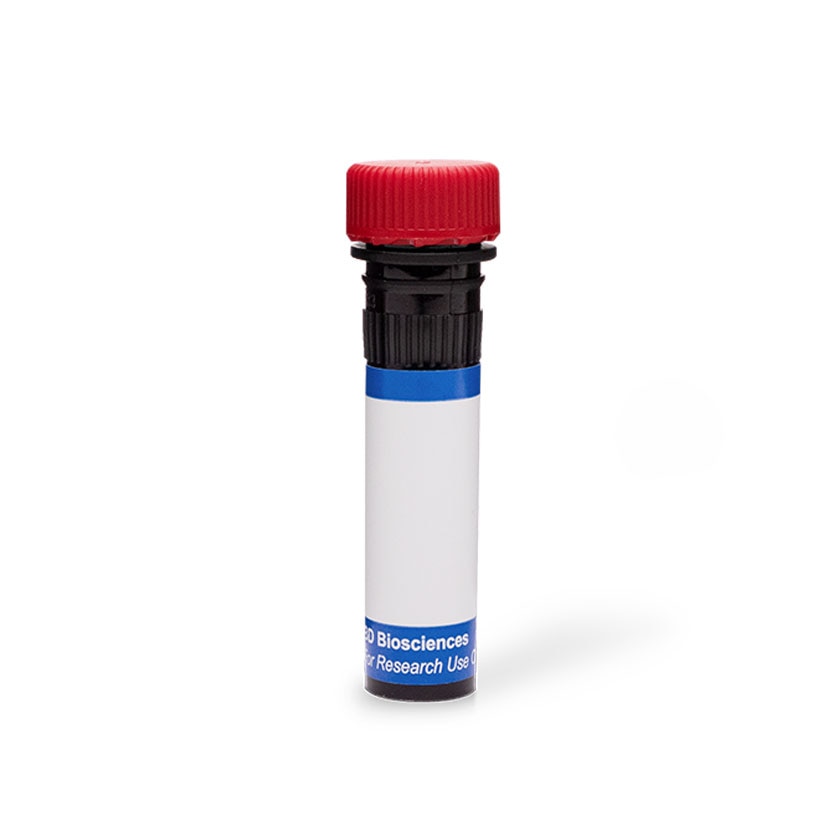
Flow cytometric analysis of IL-27 p28 (IL-30) expression by activated RAW264.7 cells. Mouse RAW264.7 cells were cultured with IFN-γ (Cat. No. 554587; 24 h; Left Plot) followed by lipopolysaccharide (LPS, Sigma L3137, 1 µg/ml; additional 24 h). BD GolgiStop™ (Cat. No. 554724) was added for the final 5 h of culture. RAW264.7 cells were cultured with tissue culture medium alone as a control (Right Plot). BD Horizon™ Fixable Viability Stain 510 (FVS510; Cat. No. 564406) was added for the last 7 minutes of culture. Cells were then fixed and permeabilized using BD Cytofix/Cytoperm™ (Cat. No. 554722) and stained with either PE Mouse IgG2a, κ Isotype Control (Cat. No. 553457; dashed line histogram) or PE Mouse Anti-Mouse IL-27 p28 (IL-30) antibody (Cat. No. 568408/568409; solid line histogram) at 0.5 µg/test according to the standard intracellular staining protocol. The fluorescence histograms showing IL-27 p28 (IL-30) expression (or Ig Isotype control staining) by RAW264.7 cells treated with (Left Plot) or without (Right Plot) IFN-γ and LPS were derived from gated events with the forward and side light-scatter characteristics of viable cells. Flow cytometry and data analysis were performed using a BD LSRFortessa™ X-20 Cell Analyzer System and FlowJo™ software. Data shown on this Technical Data Sheet are not lot specific.

Flow cytometric analysis of IL-27 p28 (IL-30) expression by activated RAW264.7 cells. Mouse RAW264.7 cells were cultured with IFN-γ (Cat. No. 554587; 24 h; Left Plot) followed by lipopolysaccharide (LPS, Sigma L3137, 1 µg/ml; additional 24 h). BD GolgiStop™ (Cat. No. 554724) was added for the final 5 h of culture. RAW264.7 cells were cultured with tissue culture medium alone as a control (Right Plot). BD Horizon™ Fixable Viability Stain 510 (FVS510; Cat. No. 564406) was added for the last 7 minutes of culture. Cells were then fixed and permeabilized using BD Cytofix/Cytoperm™ (Cat. No. 554722) and stained with either PE Mouse IgG2a, κ Isotype Control (Cat. No. 553457; dashed line histogram) or PE Mouse Anti-Mouse IL-27 p28 (IL-30) antibody (Cat. No. 568408/568409; solid line histogram) at 0.5 µg/test according to the standard intracellular staining protocol. The fluorescence histograms showing IL-27 p28 (IL-30) expression (or Ig Isotype control staining) by RAW264.7 cells treated with (Left Plot) or without (Right Plot) IFN-γ and LPS were derived from gated events with the forward and side light-scatter characteristics of viable cells. Flow cytometry and data analysis were performed using a BD LSRFortessa™ X-20 Cell Analyzer System and FlowJo™ software. Data shown on this Technical Data Sheet are not lot specific.


BD Pharmingen™ PE Mouse Anti-Mouse IL-27 p28 (IL-30)

Regulatory Statusの凡例
Any use of products other than the permitted use without the express written authorization of Becton, Dickinson and Company is strictly prohibited.
Preparation and Storage
推奨アッセイ手順
BD® CompBeads can be used as surrogates to assess fluorescence spillover (compensation). When fluorochrome conjugated antibodies are bound to BD® CompBeads, they have spectral properties very similar to cells. However, for some fluorochromes there can be small differences in spectral emissions compared to cells, resulting in spillover values that differ when compared to biological controls. It is strongly recommended that when using a reagent for the first time, users compare the spillover on cell and BD® CompBeads to ensure that BD® CompBeads are appropriate for your specific cellular application.
Product Notices
- Please refer to www.bdbiosciences.com/us/s/resources for technical protocols.
- Since applications vary, each investigator should titrate the reagent to obtain optimal results.
- An isotype control should be used at the same concentration as the antibody of interest.
- Caution: Sodium azide yields highly toxic hydrazoic acid under acidic conditions. Dilute azide compounds in running water before discarding to avoid accumulation of potentially explosive deposits in plumbing.
- For fluorochrome spectra and suitable instrument settings, please refer to our Multicolor Flow Cytometry web page at www.bdbiosciences.com/colors.
- Please refer to http://regdocs.bd.com to access safety data sheets (SDS).
- For U.S. patents that may apply, see bd.com/patents.
関連製品
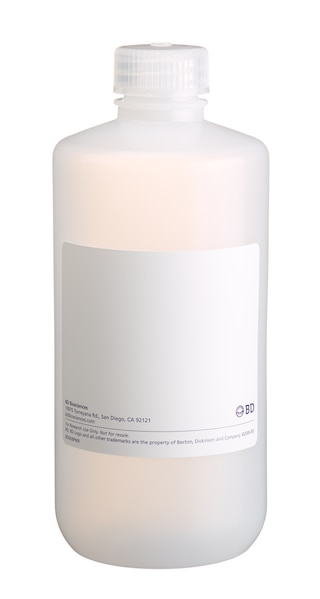
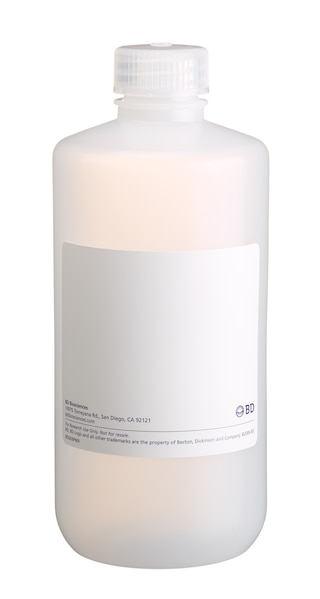
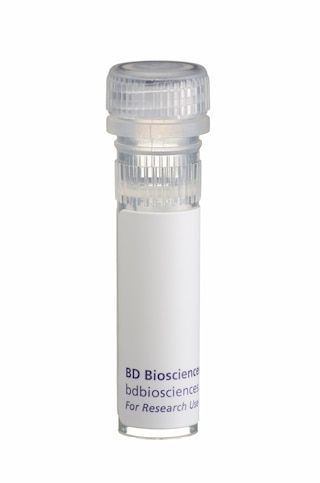


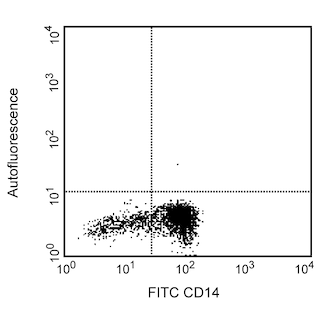
The MM27.7B1 monoclonal antibody specifically binds to the p28 subunit of mouse Interleukin-27 (IL-27 p28) that is also known as IL-27 alpha (IL-27α) or Interleukin-30 (IL-30). IL-27 p28 is a member of the IL-6/IL-12 family of cytokines. The IL-27 p28 subunit binds to the EBI3 (Epstein-Barr virus induced gene 3) protein to form heterodimeric Interleukin-27. IL-27 p28 is produced by macrophages and dendritic cells stimulated by inflammatory cytokines and ligands for Toll-like receptors (TLR). IL-27 binds to and transduces signal through surface IL-27 receptors (IL-27R) that are expressed by B cells and naïve T cells and more highly expressed by NK cells and activated T cells. The IL-27R complex is comprised of gp130 (CD130) and WSX-1 (IL-27R alpha) subunits. IL-27 signals through IL-27R that activate the Jak/STAT signaling pathway resulting in the phosphorylation of Stat1 and Stat3. It acts in a proinflammatory manner to upregulate cellular T-bet transcription factor and surface IL-12R beta2 expression contributing to higher levels of IFN-γ and granzyme B expression. IL-27 exerts anti-inflammatory responses by suppressing the differentiation and proliferation of Th2 and Th17 cells. IL-27 p28 is reportedly produced and secreted independently of EBI3. It may inhibit the actions of IL-17 and other proinflammatory cytokines like IL-6. The MM27/7B1 antibody has been reported to neutralize IL-27 activity in vitro. Routine quality testing of mAb MM27.7B1 is performed via flow cytometry of intracellularly stained IL-27 p28-transfected cells.

Development References (9)
-
Hall AO, Silver JS, Hunter CA. The immunobiology of IL-27. Adv Immunol. 2012; 115:1-44. (Biology). View Reference
-
Hibbert L, Pflanz S, De Waal Malefyt R, Kastelein RA. IL-27 and IFN-alpha signal via Stat1 and Stat3 and induce T-Bet and IL-12Rbeta2 in naive T cells. J Interferon Cytokine Res. 2003; 23(9):513-522. (Biology). View Reference
-
Morishima N, Owaki T, Asakawa M, Kamiya S, Mizuguchi J, Yoshimoto T. Augmentation of effector CD8+ T cell generation with enhanced granzyme B expression by IL-27. J Immunol. 2005; 175(3):1686-1693. (Biology). View Reference
-
Pflanz S, Timans JC, Cheung J, et al. IL-27, a heterodimeric cytokine composed of EBI3 and p28 protein, induces proliferation of naive CD4(+) T cells. Immunity. 2002; 16(6):779-790. (Biology). View Reference
-
Stumhofer JS, Hunter CA. Advances in understanding the anti-inflammatory properties of IL-27. Immunol Lett. 2008; 117(2):123-130. (Biology). View Reference
-
Stumhofer JS, Tait ED, Quinn WJ, 3rd, et al. A role for IL-27p28 as an antagonist of gp130-mediated signaling. Nat Immunol. 2010; 11(12):1119-1126. (Biology). View Reference
-
Uyttenhove C, Marillier RG, Tacchini-Cottier F, et al. Amine-reactive OVA multimers for auto-vaccination against cytokines and other mediators: perspectives illustrated for GCP-2 in L. major infection. J Leukoc Biol. 2011; 89(6):1001-1007. (Immunogen: Neutralization). View Reference
-
Yoshimoto T, Okada K, Morishima N, et al. Induction of IgG2a class switching in B cells by IL-27. J Immunol. 2004; 173(4):2479-2485. (Biology). View Reference
-
Yoshimura T, Takeda A, Hamano S, et al. Two-sided roles of IL-27: induction of Th1 differentiation on naive CD4+ T cells versus suppression of proinflammatory cytokine production including IL-23-induced IL-17 on activated CD4+ T cells partially through STAT3-dependent mechanism. J Immunol. 2006; 177(8):5377-5385. (Biology). View Reference
Please refer to Support Documents for Quality Certificates
Global - Refer to manufacturer's instructions for use and related User Manuals and Technical data sheets before using this products as described
Comparisons, where applicable, are made against older BD Technology, manual methods or are general performance claims. Comparisons are not made against non-BD technologies, unless otherwise noted.
For Research Use Only. Not for use in diagnostic or therapeutic procedures.